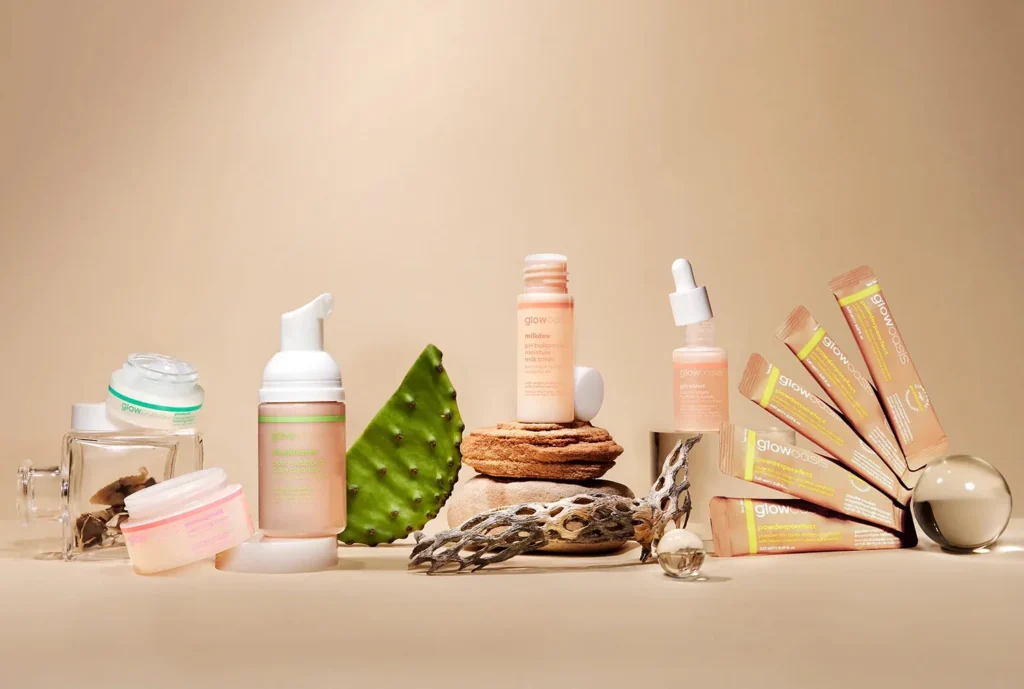In today’s demanding and ever-evolving world, skincare is no longer a luxury or a purely cosmetic routine—it has become a vital component of self-care and overall wellness.
Your skin is the largest organ of your body, acting as a protective barrier against environmental pollutants, harmful UV rays, and bacteria.
Beyond its physical functions, the condition of your skin often reflects your inner health, stress levels, and lifestyle choices.
Maintaining a healthy skincare routine isn’t just about achieving a glowing complexion; it’s about nurturing your body, boosting your confidence, and taking proactive steps toward long-term health.
Whether you’re a skincare enthusiast or just starting to explore what works best for your skin, understanding the science behind skincare can help you make informed decisions and achieve radiant, healthy skin.
In this comprehensive guide, we’ll delve into the fundamentals of skincare, the structure of your skin, key steps in a skincare routine, the role of different products, and tips for different skin types. Let’s unlock the secrets to a glowing complexion together.
Understanding the Skin: Your Body’s Largest Organ
Your skin is more than just a surface layer—it’s a dynamic organ that protects, regulates, and communicates with your internal systems. It consists of three main layers:
- Epidermis—The outermost layer that serves as a protective barrier. It is where skin cells are constantly renewed.
- Dermis—The middle layer containing collagen, elastin, sweat glands, hair follicles, and blood vessels. It’s responsible for skin’s elasticity and resilience.
- Hypodermis (Subcutaneous Layer)—The deepest layer composed mostly of fat and connective tissue. It helps regulate body temperature and cushions internal organs.
Understanding these layers is vital because different skincare products target different layers. For example, moisturizers typically work on the epidermis, while serums may penetrate deeper to influence the dermis.

Why Skincare Is Essential
The skin performs critical functions like:
- Protection: Acts as a barrier against environmental stressors such as UV radiation, pollution, and pathogens.
- Temperature Regulation: Through sweat and blood flow.
- Sensation: Contains nerve endings that allow us to feel touch, heat, and pain.
- Excretion and Absorption: Removes toxins and absorbs beneficial substances.
Proper skincare supports these functions and enhances your skin’s ability to protect and repair itself.
Common Skin Types and How to Identify Yours
To create an effective skincare routine, it’s essential to know your skin type. Here are the five main categories:
1. Normal Skin
Balanced oil and moisture levels, few imperfections, and minimal sensitivity.
2. Oily Skin
Characterized by excess sebum, enlarged pores, and a shiny complexion. More prone to acne and blackheads.
3. Dry Skin
Feels tight or flaky. Lacks moisture and may appear dull. More prone to irritation and fine lines.
4. Combination Skin
Features both oily and dry areas. Typically, the T-zone (forehead, nose, and chin) is oily, while the cheeks are dry.
5. Sensitive Skin
Reacts easily to products or environmental triggers. May experience redness, burning, or itching.
Knowing your skin type helps you choose the right ingredients and products for your routine.
Building a Skincare Routine: The Essentials
A good skincare routine doesn’t need to be complicated. Here’s a step-by-step guide to the basics:
1. Cleansing (Morning and Night)
A gentle cleanser removes dirt, oil, and makeup without stripping the skin of its natural oils. Use a water-based cleanser for oily skin and a cream or oil-based cleanser for dry or sensitive skin.
Tip: Avoid harsh soaps—they can disrupt your skin’s pH balance and cause dryness or irritation.
2. Toning (Optional but Beneficial)
Toners help restore your skin’s pH level after cleansing and prepare it to absorb serums and moisturizers. Look for alcohol-free toners with soothing or hydrating ingredients like rose water, witch hazel, or glycerin.
3. Treatment: Serums and Actives
This step targets specific skin concerns like acne, hyperpigmentation, or wrinkles. Common active ingredients include:
- Vitamin C—Brightens skin and boosts collagen production.
- Hyaluronic Acid—Provides intense hydration.
- Retinol—speeds up cell turnover and reduces fine lines.
- Niacinamide—minimizes pores and improves skin texture.
Introduce actives slowly and always patch-test new products.
4. Moisturizing
Moisturizers lock in hydration and strengthen the skin barrier. Choose a lightweight gel moisturizer for oily skin and a richer cream for dry skin.
Pro Tip: Even oily skin needs moisture. Skipping moisturizer can trigger more oil production.
5. Sun Protection (Morning Only)
Sunscreen is a non-negotiable step in any skincare routine. UV rays cause premature aging, hyperpigmentation, and increase the risk of skin cancer.
Use a broad-spectrum SPF 30 or higher every day, even when indoors or during cloudy weather. Look for non-comedogenic formulas if you have acne-prone skin.
Ingredients to Look For (and Avoid)
Powerhouse Ingredients:
- Aloe Vera: Soothes irritation and moisturizes.
- Green Tea Extract: Fights free radicals and calms inflammation.
- Ceramides: Strengthen the skin barrier.
- Peptides: Help in collagen production and improve firmness.
- Salicylic Acid: Exfoliates and clears pores (ideal for acne).
Ingredients to Avoid:
- Fragrance: Can irritate sensitive skin.
- Alcohol: dries out the skin.
- Parabens and sulfates: potential irritants and hormone disruptors for some users.
Always read ingredient labels and consult a dermatologist if you’re unsure.
Tailoring Skincare by Age
In Your 20s:
Focus on prevention. Start using sunscreen religiously and incorporate antioxidants like vitamin C.
In Your 30s:
Cell turnover slows. Add retinoids and hydrating serums to maintain elasticity.
In Your 40s and Beyond:
Use richer moisturizers, peptides, and targeted treatments for fine lines and pigmentation. Consider professional treatments like chemical peels or microneedling.
Skincare for Specific Concerns
Acne-Prone Skin:
Use salicylic acid or benzoyl peroxide. Avoid heavy creams and non-comedogenic makeup. Cleanse twice daily and avoid touching your face.
Hyperpigmentation:
Vitamin C, niacinamide, and alpha arbutin help lighten dark spots. Don’t skip sunscreen—it prevents further pigmentation.
Aging Skin:
Look for retinoids, hyaluronic acid, peptides, and SPF. These improve skin texture and reduce wrinkles over time.
Rosacea and Sensitive Skin:
Avoid fragrances, alcohol, and harsh exfoliants. Use gentle cleansers and calming ingredients like chamomile or centella asiatica.
Debunking Skincare Myths
Myth 1: You don’t need sunscreen on cloudy days.
Truth: UV rays can penetrate clouds and glass. Daily sunscreen is essential.
Myth 2: Natural products are always better.
Truth: Not all natural ingredients are safe for all skin types. Poison ivy is natural—but not skincare-friendly!
Myth 3: More products mean better results.
Truth: A minimalist routine with the right ingredients is more effective than a 10-step one with unsuitable products.
How Diet and Lifestyle Affect Your Skin
Skincare is more than skin-deep. Your lifestyle directly impacts your skin’s appearance.
1. Hydration
Drink plenty of water to keep skin plump and healthy.
2. Balanced Diet
Include fruits, vegetables, and omega-3 fatty acids. Antioxidants fight inflammation and delay aging.
3. Sleep
Skin repairs itself at night. Aim for 7–9 hours of sleep daily.
4. Stress Management
Chronic stress leads to breakouts and premature aging. Practice mindfulness, meditation, or physical activity.
5. Avoid Smoking and Excessive Alcohol
They dehydrate skin and accelerate aging.
The Importance of Consistency
Skincare is not a one-time fix; it’s a long-term commitment. Products take time to show results—usually 4 to 6 weeks. Be patient and stick to your routine
Sustainable Skincare: Being Kind to Your Skin and the Planet
Consumers are becoming more eco-conscious, and so is the skincare industry. Look for brands that use recyclable packaging, cruelty-free testing, and ethically sourced ingredients.
Also, multi-use products should be considered to reduce waste and clutter in the vanity.
Skincare Is Self-Care
Caring for your skin is an act of self-love. Whether you’re managing acne, preventing signs of aging, or simply trying to feel good in your skin, the key is knowledge, consistency, and kindness to yourself.
Choose products that suit your skin type, stick to a daily routine, and embrace your unique beauty.

